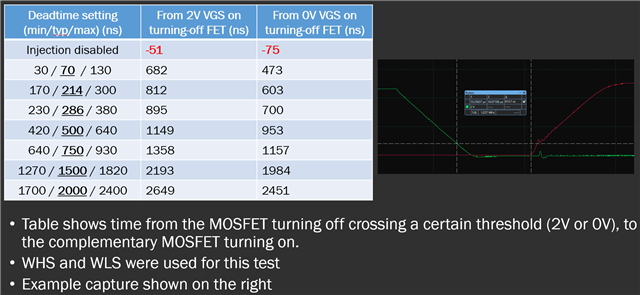Tool/software:
Dear technical team,
I'm optimizing the settings for my design and noticed the dead time is much higher than expected. I use DEADT_MODE = 1 (Dead time is inserted by monitoring gate driver outputs (GHx or GLx)) and DEADT = 001b (214 ns).
So GLx should start to increase the latest about 300ns after GHx reaches 0V. However I measure almost 800ns what is odd. The time increases / decreases when changing DEADT setting by about the right amount, but I have an offset of ca. 600ns.
The MOSFET used is BSC039N06NS.
CH1 (Yellow): GLx
CH2 (Green): SWx
CH3 (Blue): Phase current
CH4 (Red): GHx
Math (Pink): GHx - SWx = high side FET Vgs



I use quite generous settings for TDRVP (750ns) and TDRVN (464ns). Does this interfere with the dead time? As I read the diagram it should not.
Please advise.
Thank you and kind regards
Stefan














